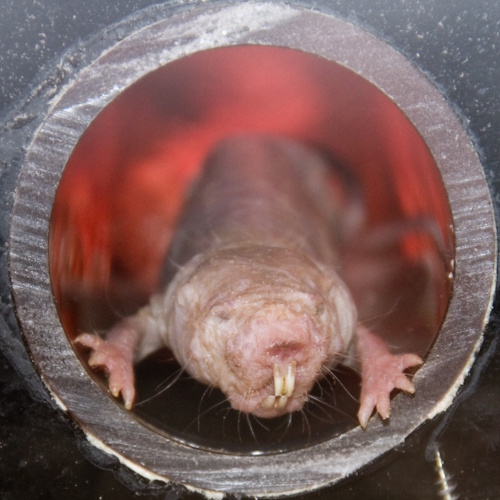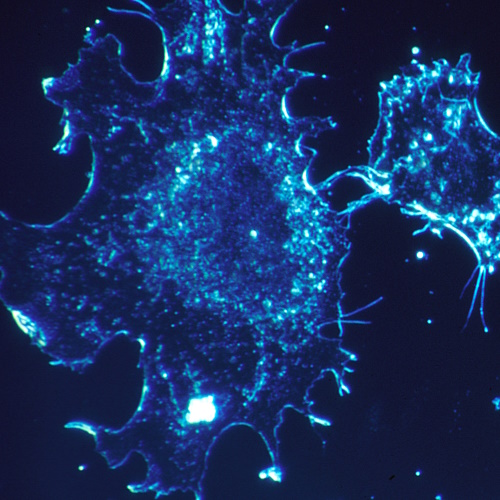Carcinogenesis is the process by which normal cells in the body transform into cancer cells. Although the precise mechanisms of carcinogenesis are still not fully understood, it is known that it is a complex and multi-step process that involves the accumulation of genetic mutations and other alterations to the cell's DNA. Carcinogenesis is a leading cause of death worldwide and a major challenge for human health today.
In recent times, researchers have observed several mammals, such as bats and elephants, which have significant natural resistance against cancers. Understanding why certain species are more resistant to it can provide insights into how to prevent and treat cancer.
One species that is of particular interest in this context is the naked mole-rat. A recent Japanese study identified several molecular mechanisms of cancer resistance in NMRs, explored in the last two decades, and discussed future potential for human therapies.
Naked mole rat: A biological riddle
Naked mole-rats (NMR) are a species of rodent that are native to East Africa and are known for their long lifespan, which can reach up to 37 years, making them one of the longest-lived rodents in the world. Additionally, they are also known for their remarkable resistance to cancer, which is particularly remarkable given that their long lifespan would imply that they should be more susceptible to carcinogenesis. They also show very little age-related physiological decline in reproductive and cardiovascular capacity or neurodegenerative changes. As a result, NMRs have been gaining popularity in several research domains directed particularly at ageing and cancer.
Here, we summarise the important factors which have been reviewed by the study.
Inherent carcinogenesis resistance
The naked mole-rat is a species that has been shown to be highly resistant to cancer. This conclusion is based on several observational studies in captive colonies, where no cases of cancer have been reported among 2000 individuals, with only rare cases documented in necropsies. Experiments were also done to induce carcinogenesis by chemical exposure and analysing responses in laboratories. When NMRs were subjected to known chemical carcinogens, all NMRs remained cancer free for more than 2 years. In comparison, mice in similar conditions developed tumours in all cases within 24 to 30 weeks.
Cancer and DNA repair in NMRs
It has been established in many studies that DNA repair is vital in preventing cancer. This recent study found that the somatic mutation rate in the NMRs is low compared to their body mass due to efficient DNA repair.
Somatic mutations are alterations that can occur in any cells of the body except sperm and eggs. Higher mutation rates raise the chances of cancer. The study also shows that NMRs have higher SIRT6 activity compared to other species, which contributes to the efficiency of DNA repair pathways. It found that NSCs (neural stem cells) in NMRs are resistant to DNA damage, which may reduce DNA damage and cell death.
The disparity between the spontaneous mutation frequency in NMR intestines and cultured NMR fibroblasts highlights the need for further research to understand the molecular mechanisms behind NMRs' efficient DNA repair capacity.
Cell-autonomous resistance to transformation in NMRs
Studies on NMRs have shown that their cells exhibit slower cell proliferation rates and exhibit resistance to cancer. This is due to several cell-autonomous mechanisms, such as the presence of tumour-suppressor genes (e.g. ARF and p16INK4a) and the secretion of HMM-HA, which enhances sensitivity to cell-cycle arrest.
NMR induced pluripotent stem cells (iPSCs) also exhibit tumour resistance. However, studies have shown that the introduction of potent oncogenes may still result in the transformation of NMR cells. Further studies are required to determine the level of oncogenic mutations NMR cells can tolerate before carcinogenic transformation occurs.
Unusual immune system and inflammatory response of NMRs
Studies have shown that NMRs have a unique immune system, including a lack of natural killer cells, a high myeloid-to-lymphoid cell ratio, and no thymic involution. NMRs also exhibit a dampened inflammatory response and lower frequency of cytotoxic T cells compared to mice despite the DNA damage and cell death from the chemical carcinogen exposure.
The lack of necroptosis (programmed necrotic cell death)-inducing ability in NMRs suppresses the release of damage-associated molecular patterns (DAMPs) and limits the accumulation of immune cells upon exposure to carcinogens, which in turn, suppresses cancer promotion in the body.
Conclusion
The tiny yet mysterious NMR shows enough potential for new avenues of tackling cancer.
However, there is a need for further research, to better understand NMR's resistance to DNA damage, cell-autonomous resistance to transformation, and the unique immune system.
Further investigation of NMR's properties, such as hypoxia tolerance, longevity, and sociality, is also needed to fully understand their cancer resistance mechanism and utilise the same in humans.
Author: Joydev Bhattacharjee

Reference
Carcinogenesis resistance in the longest-lived rodent, the naked mole-rat - Kyoko Miura et al, Kumamoto University, Japan – Cancer Science Dec-2022





